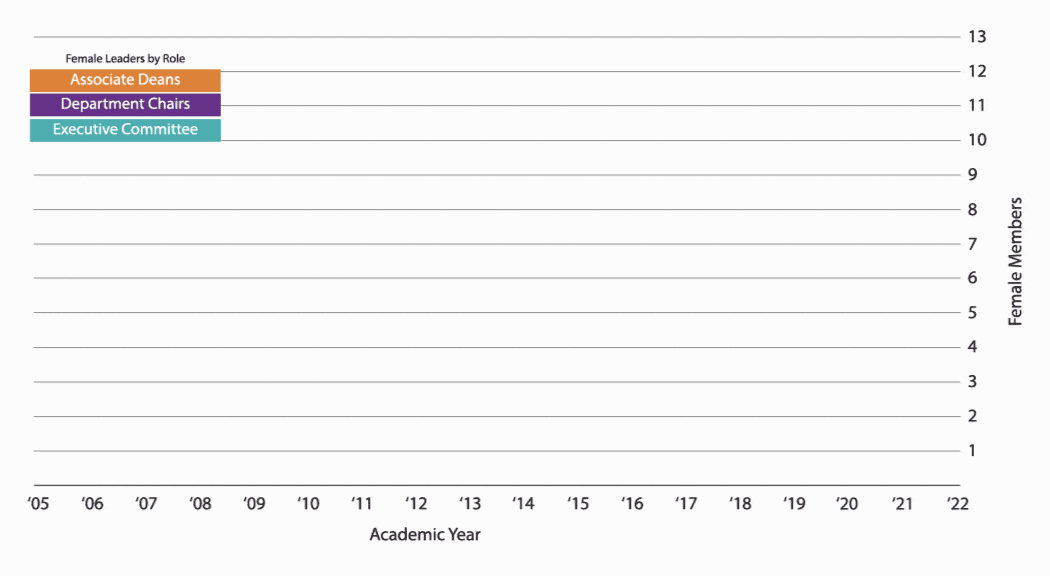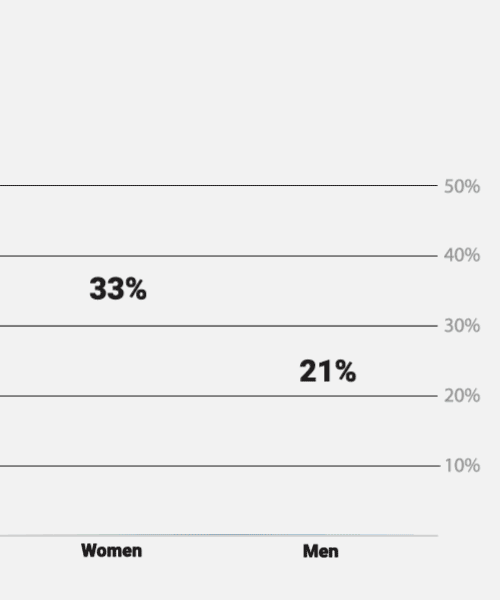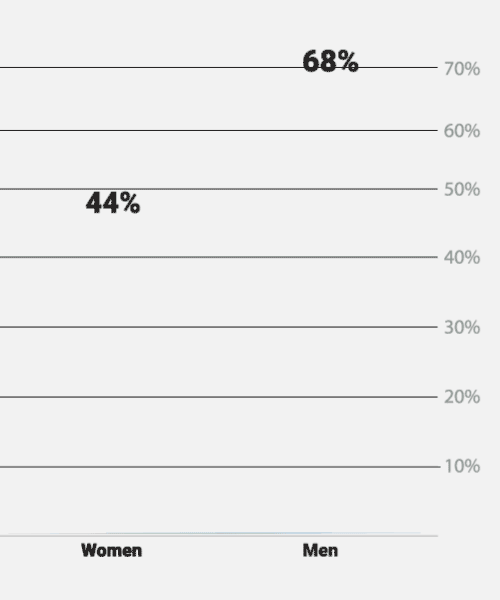Four tools for success
Faculty members who self-identify as women now hold approximately half the academic leadership positions at the University of Michigan College of Engineering. That total is roughly the same as the number of women who held one of those positions in the college’s entire history – going back to 1854 – before 2016. We’re excited about this progress because we expect it will have positive ripple effects.
For us, the catalyst for a new way of thinking was a 2001 National Science Foundation ADVANCE grant for “institutional transformation.”
Culture change isn’t easy, but you don’t have to start from scratch. As we outlined in the Chronicle of Higher Education and discussed in an ASEE webinar, we’re sharing four tools that have helped us spark change and we invite you to build upon our experience.
“When I tell people we have 50% gender equity in our leadership, I often see an unspoken assumption in their eyes: That we passed over more qualified male candidates to make this happen. That’s emphatically not the case.”
Alec D. Gallimore, the Robert J. Vlasic Dean of Engineering, the Richard F. and Eleanor A. Towner Professor, an Arthur F. Thurnau Professor, and a professor of aerospace engineering (2018)
Women in Engineering Faculty Leadership

In 2022, women held 11, or 46%, of the College’s 24 faculty leadership positions, including appointments as 1 of 4 associate deans, 7 of 14 department chairs and 3 of 6 executive committee members. Source: University of Michigan College of Engineering, 2022
Why it matters
It’s not about charity. It’s about staying competitive.
- Public companies in the top quartile for gender diversity on their leadership team are more likely to outperform others, according to a 2020 McKinsey and Company report: Diversity Wins: How Inclusion Matters
- Tough problems require teams that bring diversity in experiences, training, and perspectives to the table, according to Scott Page, in The Diversity Bonus: How Great Teams Pay Off in the Knowledge Economy
- Yes, it really is an engineering problem. The way we teach power, privilege, social identity and unconscious bias has deep social implications according to our 2020 series, Diversity Myths.
A toxic status quo
We must change a culture that suppresses talent
- Inadequate support for faculty parents
- Lack of attention to departmental work climate
- Poor/non-existent mentoring
- Inadequate attention to leadership development
- Sexual harassment
- Biased ways of talking about faculty
- Unconscious evaluation bias and a focus on incomplete measures of merit
- Inequities in salary and other forms of recognition
- Inadequate attention to safety (parking lots, etc.)
Diversity is multi-faceted
We know gender isn’t binary.
In our case, to date, leadership roles have only been held by those who self-identify as male or female. We know that’s not representative of the world.
So even though we’re talking about gender diversity in leadership here, we believe that gender diversity in and of itself helps achieve broader diversity throughout an institution.
Talking points
There’s no shortage of excuses for inaction. Here are a few ways to reframe the conversation.
“Nothing’s broken. Why do we need to fix it?”
- “Actually, the system *is* broken, but the cracks aren’t visible to those who aren’t experiencing them. Have we surveyed our climate recently? If not, why don’t we?”
- “We’re not reaching our full potential as an institution. Research shows that organizations with better gender balance are more innovative, bring in more revenue, and make better decisions.”
“I don’t have time to chair that committee.”
- “I know you’re incredibly busy, but we need your insights and perspective.”
- “This could give you visibility and leadership skills to help advance your career. We should talk more about leadership opportunities and why you might consider that path.”
- “What’s your current teaching and service load like? Can we shift any responsibilities?”
1.)
Figure out where your playing field isn’t level
Start by measuring your culture problem. What makes this step particularly important in working toward diversity, equity and inclusion is that what underrepresented people face can be invisible to those in the dominant demographic. This isn’t one and done – ongoing assessment should be part of your culture. There are a lot of ways to measure, including:
Surveys
Surveys can be conducted internally or by external parties. In 2001, Michigan’s new ADVANCE program started with a climate survey that polled all faculty members. One of the telling outcomes was that female scientists and engineers at Michigan rated the university more negatively than did their male colleagues on nearly every climate measure, but particularly on whether their department had a “gender-egalitarian atmosphere.”
Most recently, we’ve conducted surveys in 2017 and 2021 to understand our present climate and inform our ongoing DEI efforts.
Considered leaving because they felt isolated or unwelcomed

My department/unit is a place where I am able to perform up to my full potential

A 2021 College climate survey conducted by the U-M Office of Diversity, Equity & Inclusion and SoundRocket revealed disparities between the perceptions of men and women when it comes to culture.
Exit interviews
Faculty members who leave voluntarily (not denied tenure or retiring) often cite lack of collegiality and climate as key reasons. Of course, many faculty members consider leaving – these are talented folks who know they have opportunities elsewhere. But many of them say they are looking for a more supportive work environment and to garner more respect.
Climate comes up as often as things like salary and employment situations of a partner, and it comes up more often for women faculty members. Junior faculty members are likely to cite insufficient mentoring or professional development as reasons for leaving. Senior faculty who leave are more likely to cite insufficient opportunity for leadership or voice in the department.
“What underrepresented people face can be invisible to those in the dominant demographic.”
Jennifer Linderman, University of Michigan ADVANCE program director and the Pamela Raymond Collegiate Professor of Engineering in chemical engineering and biomedical engineering
Salary analysis
The pay gap persists in academia, just as it does in the world at large. What are the statistics for your department? How do you justify them? If it is because women are shouldering the bulk of less valuable work, it signals a problem. And beware the superstar effect: when the number of women on the faculty is small, it’s easy for one highly-paid woman to raise the average salary for women – hiding inequity.
Audits of recognition and rewards
Do the demographics of your named professors and named lecturers suggest that women are being overlooked? What about this semester’s roster of seminar speakers, especially premier named lectureships? These honors send a strong message about who is valued in your field. While you’re at it, take a look at honorarium rates and make sure they’re fair.
Finally, who is advancing to leadership positions? Are women disproportionately taking less prestigious posts? Committee and assistant or associate chair positions are critical stepping stones toward the most senior roles in academia. Make sure your department isn’t serving as a glass ceiling.
Beware of the data trap
We love data, too, but be careful not to spend all your time collecting and looking at the data and not deciding what to do next. Experiment and then assess again. Policies and practices may need to be modified, tested and modified again. Especially on climate, we know that movement is slow – continue to work and assess every few years.
Pay attention to intersectionality
We’ve been talking about climate for women, but women of color may experience a different climate than white women. It’s hard to draw conclusions about this in our engineering data because the numbers are too small to look at in a statistically meaningful way. However, across campus, ADVANCE data shows that women of color generally rate the climate less positively than both white women and men of color.
2.)
Equip search committees to challenge unconscious biases
By now, there is a high degree of awareness in academe about unconscious bias – the shortcuts our brains take in deciding who is competent and trustworthy. People also view virtues and faults differently, depending on whether they’re assessing a man or a woman. The goal here in the hiring process is not just to spot unconscious biases in ourselves and in others – but to challenge them. We’ve worked hard to equip search committees with these skills. Here are some tactics:
Develop workshops and require attendance
At U-M, the Committee on Strategies and Tactics for Recruiting to Improve Diversity and Excellence, or STRIDE, has developed workshops for faculty and administrators. We’ve made this training mandatory for anyone involved in hiring. Sixty percent of our engineering tenured and tenure-track faculty members have attended, contributing to a “rising tide” mentality. The tactics the workshops cover also apply when selecting leaders. The training:
- Is evidence-based, and STRIDE has produced a filterable resource of literature surrounding issues of bias, arranged by topic.
- Provides information and advice about practices that will maximize the likelihood that diverse, well-qualified candidates will be identified, and, if selected for offers, recruited, retained, and promoted at U-M.
- Prepares participants to implement best practices
“This changed the conversation. It becomes everyone’s work to think about strategies to mitigate bias.”
Alec D. Gallimore, the Robert J. Vlasic Dean of Engineering, the Richard F. and Eleanor A. Towner Professor, an Arthur F. Thurnau Professor, and a professor of aerospace engineering (2018)
Learn to spot bias in letters and evaluations
The literature shows that letters of recommendation for women (and people of color) frequently contain hedges, faint praise, doubt raisers, irrelevancies and grindstone adjectives rather than standout adjectives.
Actual Examples
- “She is a … devoted wife and mother of two children who manages these responsibilities efficiently, so that she can achieve the scholarship she desires.”
- “She is very polite, modest, and has a very sweet character.”
- “Over the past few years, she has learned to balance her intensity with more fun.”
You can push against this. If someone on a hiring committee says a candidate “isn’t ready” for the position, ask why. What evidence does the speaker have to support this conclusion? What we too often hear is: “He is ready for the next challenge;” “She doesn’t have enough experience.”
Define criteria in advance
Before you start considering particular candidates for a leadership position, talk about and write down specific evaluation criteria to articulate what you’re actually looking for. What skills must they have, and what others can they develop on the job? Recognize that there are multiple paths to leadership positions – what matters are the skills and talents they would bring, not necessarily how they acquired them. If you don’t set criteria in advance, it can be easy to look at some CVs and fall into a “this feels like the right one” trap. Once you’ve set criteria, use a rubric like this candidate evaluation tool (.docx download) to evaluate candidates.
3.)
Cultivate leaders by ensuring equal access to mentors
An organization’s next leaders don’t come out of thin air. Over years, or decades, they get experience and advice that propels them to the top jobs. But if men have more access to good mentors than women do, that only sustains the gender disparities of the past. Our first climate survey confirmed that men in engineering tended to have more mentors than women did. Here’s how we’ve counteracted that:
Launch committees
We provide all new untenured tenure-track professors with a launch committee of four senior faculty members – including the department chair – that meets with them monthly during their first year. These committees address all kinds of issues – setting up a lab, recruiting students, teaching concerns, funding. Not only does this help new faculty members get a strong start, it’s also the beginning of their professional network of collaborators and mentors at Michigan.
Engineering salons
We created “engineering salons” as venues for sharing information about how the university and college work. A salon might, for example, explore what the College of Engineering Executive Committee does, the value of being on such a committee, the steps involved in getting on it and the work involved in serving. We found that once more women had this information, they were more likely to be interested in different leadership opportunities.
Actively recruit
Some women with decades of experience in engineering may hesitate to apply for the top leadership jobs, doubting that they would be treated fairly if they put themselves forward. In hiring leaders, it is important to actively recruit great candidates. Our dean personally approached several professors – male and female – to encourage them to apply for leadership positions – in some cases a year before they became open. Several women commented that this small gesture sent the message that they would be taken seriously.
“We’ve made way too much of an investment in hiring faculty to leave mentoring and professional development to chance.”
Jennifer Linderman,
University of Michigan ADVANCE program director and the Pamela Raymond Collegiate Professor of Engineering in chemical engineering and biomedical engineering
Don’t make assumptions
When recruiting, you may have an assumption that she isn’t really interested, or that it is so obviously a good job that you don’t have to do any convincing/recruiting. But that’s a bias. Faculty members turn down leadership positions, even ones you think are terrific opportunities.
Continue support throughout faculty careers
Mentoring isn’t done once a faculty member gets tenure or ascends to a leadership post. We hold seminars for new associate and new full professors that include various ways to think about leading, and we offer leadership coaching to faculty members who have stepped into those roles. You can signal that this is available and useful, perhaps by taking leadership coaching on your own and referencing helpful conversations you’ve had with your coach. Here are some resources for guidance and inspiration:
- Leadership development programs like Drexel’s ELATES are designed to advance senior women faculty.
- U-M’s LIFT Program (scroll down on that page for more info) offers seminars for new associate and new full professors that include various ways to think about leading.
- How coaching can help: An Inside Higher Ed article on how leaders in academia can better utilize coaching.
Consider underplaced individuals
A candidate with a lot of external leadership (society president, editor, etc.) but little internal leadership might lead you to suspect that their talents were undervalued in their department.
Counter schemas the candidates may have that could cause some to self-select out, such as assuming “that position would never go to a person like me.”
4.)
Expand merit to include “Taking inequality seriously”
Leadership is about recruiting the best people and bringing out the best in them. In academia we tend to evaluate merit based on academic pedigree – which institutions issued your degrees, which journals published your work, which conferences invited you to speak, which organizations honored your contributions to the field and the larger society. Those measures contain their own biases.
For example: membership in the National Academies of Science, Engineering, and Medicine is one of higher education’s top honors. The academies choose new members by seeking nominations from existing ones. As you might expect, the ranks are dominated by men and concentrated in a handful of universities.
Conventional measures of merit are also incomplete. How many times have we seen academic leaders tick off all of these boxes but lack true leadership skills?

Require a diversity plan
Because conventional measures don’t hasten change, we added another layer to our hiring process for department chairs. Applicants had to submit a diversity plan and were evaluated on their record and their potential contribution to progress in diversity, equity, and inclusion.
“A leadership candidate who cannot see that the playing field is uneven has no hope of correcting it.”
Alec D. Gallimore, the Robert J. Vlasic Dean of Engineering, the Richard F. and Eleanor A. Towner Professor, an Arthur F. Thurnau Professor, and a professor of aerospace engineering (2018)
Some people oppose this requirement, but in our view, a diversity plan is an opportunity for the applicant to describe how they will perform a central part of the job – changing a culture that suppresses talent. Both the men and women we hired suggested thoughtful diversity policies, but it turned out that, this time, experience may have given women the edge on this aspect of the job.
Our goal is to become an engineering college in which students, postdocs, staff members, and faculty members enjoy truly equal opportunities. Our leaders must recognize their own advantages and the barriers encountered by others.
Requiring a diversity plan is an excellent first step. Some things to consider when you’re evaluating submitted plans:
- Does it build diversity education and appreciation into the fabric of your department?
- Does it address inequities in how faculty members are rewarded—and in what forms?
- How is progress measured? Diversity work is never done.
For reference, take a look at the evolution of our strategic plan. We also highly recommend An Inclusive Academy (2018), a book by Abigail J. Stewart and Virginia Valian about how colleges and universities can live up to their ideals of diversity, and why inclusivity and excellence go hand in hand.